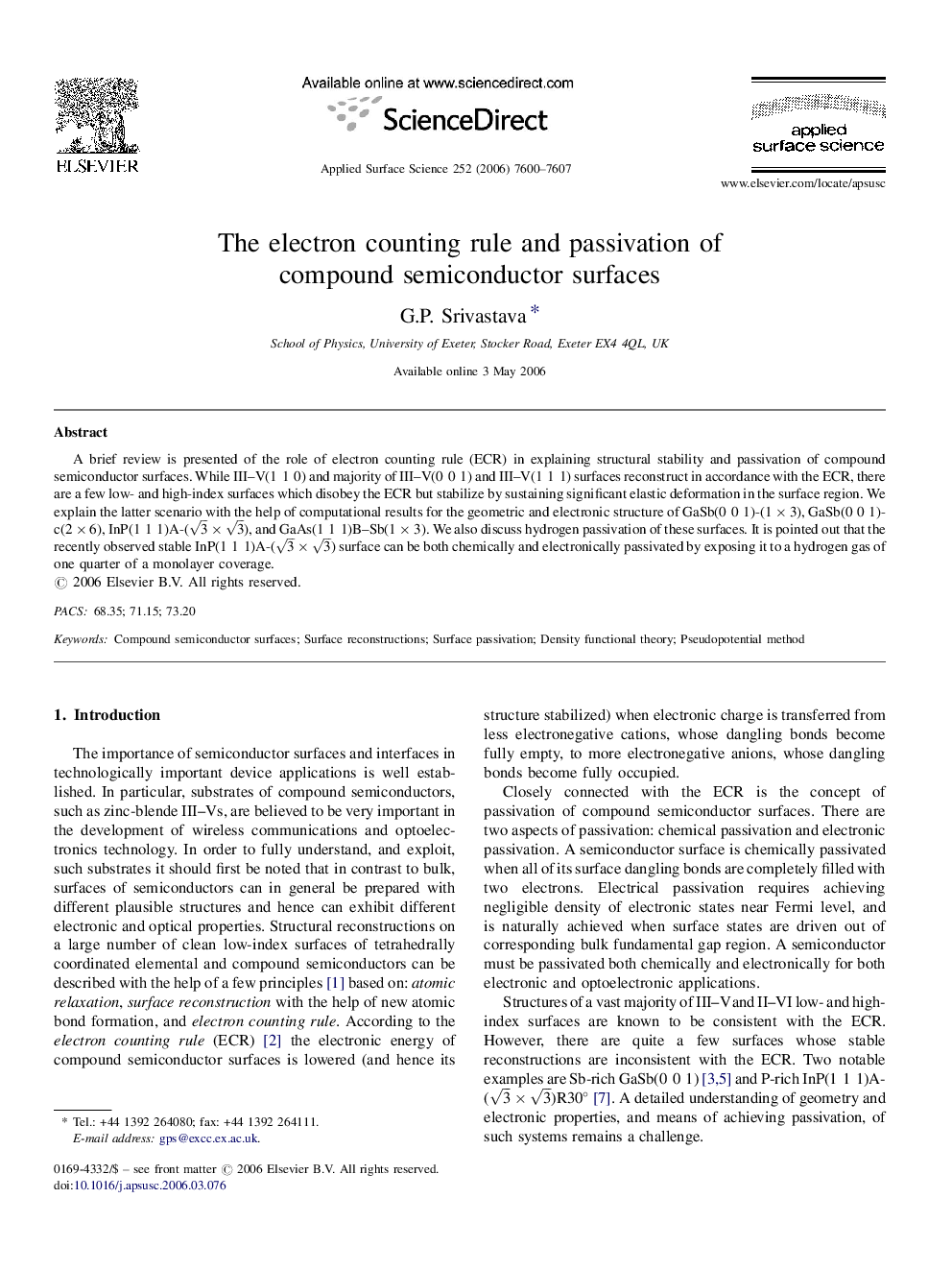| Article ID | Journal | Published Year | Pages | File Type |
|---|---|---|---|---|
| 5366703 | Applied Surface Science | 2006 | 8 Pages |
A brief review is presented of the role of electron counting rule (ECR) in explaining structural stability and passivation of compound semiconductor surfaces. While III-V(1â1â0) and majority of III-V(0â0â1) and III-V(1â1â1) surfaces reconstruct in accordance with the ECR, there are a few low- and high-index surfaces which disobey the ECR but stabilize by sustaining significant elastic deformation in the surface region. We explain the latter scenario with the help of computational results for the geometric and electronic structure of GaSb(0â0â1)-(1Ã3), GaSb(0â0â1)-c(2Ã6), InP(1â1â1)A-(3Ã3), and GaAs(1â1â1)B-Sb(1Ã3). We also discuss hydrogen passivation of these surfaces. It is pointed out that the recently observed stable InP(1â1â1)A-(3Ã3) surface can be both chemically and electronically passivated by exposing it to a hydrogen gas of one quarter of a monolayer coverage.
